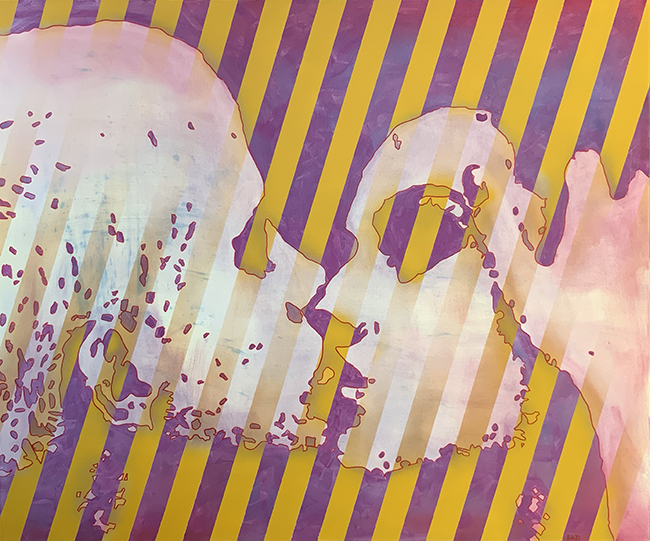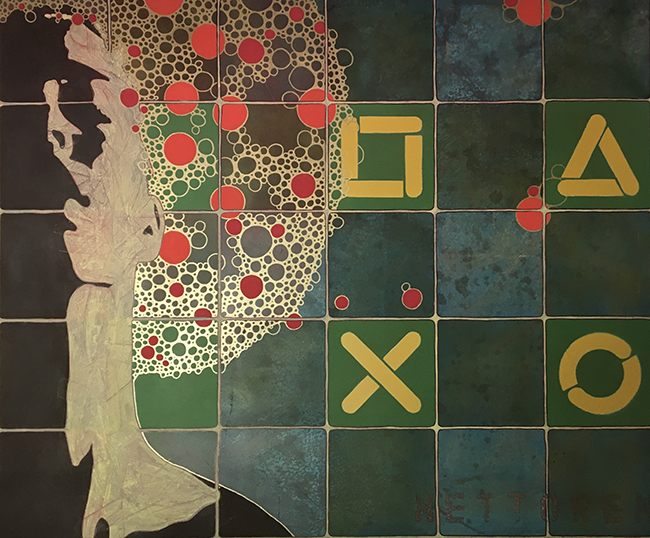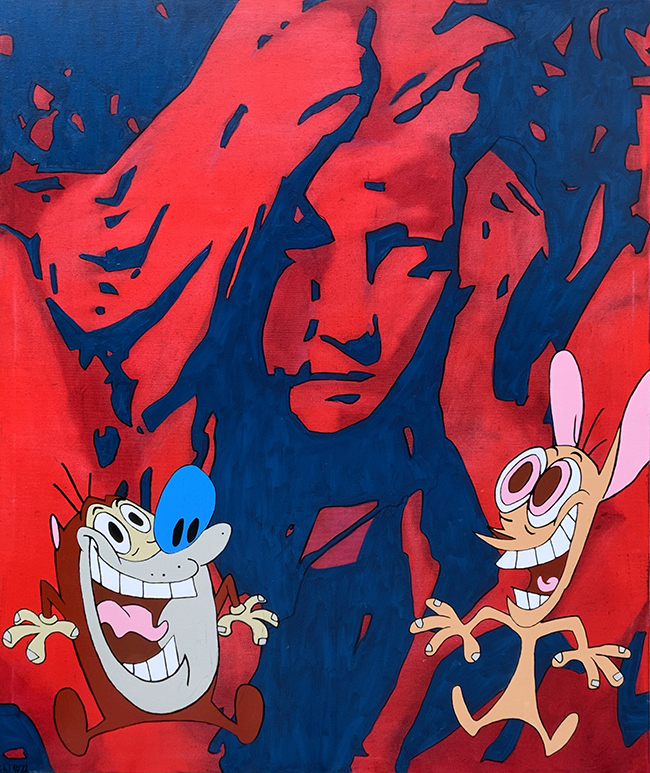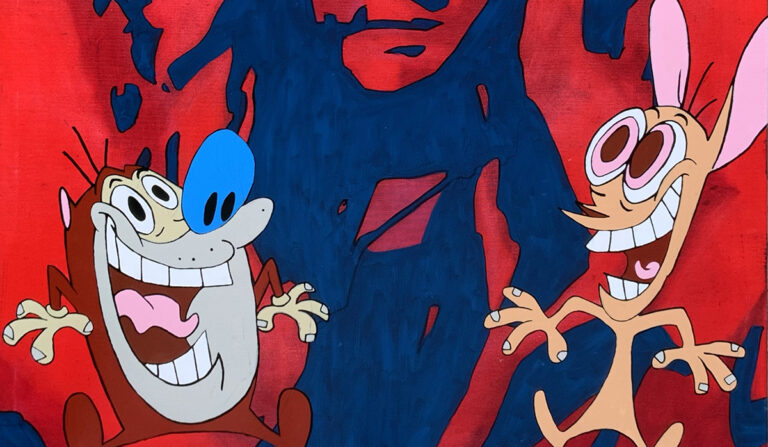In a world driven by productivity and rapid change, Ettore Albert champions the necessity of beauty as a transformative element—a fundamental part of human experience that holds the power to bring about change. His work embodies a vision where beauty isn’t a fleeting pleasure but a source of inspiration, revealing the potential of a world filled with freedom and joy.
Albert finds resonance in Dostoevsky’s words, “beauty will save the world,” and this idea is woven into the fabric of his artistic vision. His approach questions modern values, prioritizing the transformative power of art over efficiency. For Albert, creativity is a path to joy, and beauty serves as its guiding force, reshaping how we engage with the world.

Gravity
In Gravity (2022), Albert explores form and abstraction, presenting a visual dialogue that blurs structured shapes with the amorphous. This 100 by 120 cm oil and acrylic painting is layered with traces of avant-garde and post-impressionist influences, suggesting rather than explicitly showing. The composition invites the viewer to look beyond the literal, delving into an emotional and symbolic experience.
Faces and figures emerge and fade into geometric patterns, giving way to a sense of absence—a deliberate vagueness that encourages emotional interpretation over visual clarity. The background is a composition of clean lines and balanced colors, creating a subtle harmony that serves as an anchor for the central figures. The figures seem to float, held in suspension, as though captured in a moment of gravitational pull. The viewer is drawn in, invited to interpret the unresolved emotions of the piece. In Gravity, Albert crafts a layered approach that turns beauty into a medium of introspection, connecting viewers with their own internal responses.

Mommy
Albert’s Mommy (2021), another 100 by 120 cm oil and acrylic work, combines abstract geometry with elements of portraiture. The background’s structured grid forms a visual framework that holds each element within the composition, lending a sense of unity. The grid is more than a backdrop; it actively integrates each figure and object, creating a cohesive yet layered space.
At the forefront is the partially shadowed face of a woman, positioned to the side of the canvas. This interplay of light and shadow feels intentional, as if the viewer is illuminating her face with a beam of light. This subtle interaction invites engagement, giving the impression that the viewer has an active role in the scene. The contrast between the geometric rigidity of the background and the softer, expressive portrayal of the woman reveals Albert’s knack for balancing opposing elements, cultivating a space where spontaneity and order coexist. Each layer adds a rhythm, a visual cadence, that invites exploration and interaction, encouraging viewers to find their place within the piece.

Trinity
With Trinity (2022), Albert delves into the ambiguity of boundaries, capturing the essence of a world where distinctions have begun to dissolve. The painting addresses the fading lines between reality and fiction, good and bad, and the very definitions of beauty and its opposite. Here, Albert blends realism with abstraction, constructing a space where the two intersect and challenge each other.
In this work, a realistic backdrop grounds the scene, while two fictional characters in the foreground disrupt its order, resulting in a merger of contrasting worlds. Albert’s composition defies convention, avoiding the confines of traditional aesthetics in favor of an approach where imagination is limitless. The characters embody the fluidity of ideas, hinting at a world that values creativity over conformity. Through Trinity, Albert crafts an immersive journey, encouraging viewers to move beyond the surface and step into a narrative shaped by personal and artistic freedom.
Albert’s works—Gravity, Mommy, and Trinity—are each a testament to his vision of art as a medium for introspection. By blending light, structure, and a range of abstracted and realistic forms, he draws viewers into a space that encourages reflection and engagement. Albert’s belief in beauty as a potent force drives his art, challenging perceptions and inspiring audiences to embrace the transformative potential of aesthetics. Through his paintings, he reveals a world where beauty is more than form; it becomes a way to view and experience the world anew.

